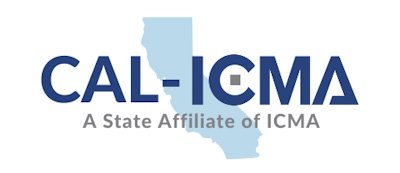Embracing AI in Municipal Governance: Opportunities, Challenges, and Strategic Implementation
Peter Pirnejad, City Manager, Town of Los Altos Hills, CA
As the city manager for the Town of Los Altos Hills, President-Elect of Cal-ICMA, and a board member of CivStart, I have been fortunate to be at the forefront of government-focused Generative AI. This unique position allows me to share insights on what cities, towns, and villages should consider when thinking about AI, its origins, and its potential applications.
Artificial Intelligence (AI) is defined as a machine that imitates human behavior through data, code, and mathematics. Today, more generally we primarily use Artificial Narrow Intelligence (ANI), which excels at specific tasks such as spam management, fraud detection, facial recognition, virtual assistants, recommendation engines, and chatbots. The innovation in AI is driven by big data, high-performance computing, better software, massive investment, and market interest.
Building on the capabilities of ANI, we now have Artificial Generative Intelligence (AGI) or GenAI (AI), which represents a significant advancement in AI technology. AI goes beyond executing specific tasks by generating new content and ideas, often mimicking human creativity and thought processes. This technology powers applications like language models that can write essays, create art, develop software code, and even compose music. The potential of AI lies in its ability to understand context, learn from vast datasets, and produce innovative solutions and outputs, making it a transformative tool for various sectors, including municipal governance. By leveraging AI, cities can enhance decision-making processes, streamline operations, and provide more personalized and efficient services to their communities.
Generative AI tools like ChatGPT, Gemini, and CoPilot are revolutionizing local government work by significantly augmenting creativity and productivity. These tools help accelerate the brainstorming process, providing innovative ideas, insights, review large sums of data, collect and present research all of which can enhance staff productivity. They reduce writer's block by offering well-structured drafts and content suggestions, enabling officials to focus on refining and finalizing important documents. Additionally, by handling routine and mundane tasks such as drafting emails, articles, press releases, reports, and meeting agendas, these AI tools free up valuable time for government staff to concentrate on more strategic and impactful activities. By suggesting more efficient workflows and optimizing task management, GenAI tools are empowering local governments to be more responsive and effective in serving their communities.
In addition to the free-form tools there are a growing number of Government Technologies that have AI embedded into them. The applications of AI in government are vast and varied. For example, AI-powered tools like Flock Safety and Rain can help eliminate crime and rapidly suppress wildfires, enhancing public safety. Traffic enforcement has also seen advancements with Hayden.ai’s AI-powered cameras delivering state-of-the-art traffic enforcement and real-time insights. In terms of community engagement, tools like Citibot enhance communication through advanced generative AI. Administrative efficiency is another area benefiting from AI, with tools like Madison AI, Polco, Julius, and Otter.ai streamlining tasks such as data analysis and note-taking. Hamlet offers advanced clerking functions by utilizing AI to transform recorded meetings into comprehensive summaries and recaps. Their technology ensures that board meetings are efficiently documented, providing clear and concise overviews of discussions and decisions. Furthermore, platforms like Coursera use AI to auto-generate course content for training government employees, providing valuable resources for training and education.
To strategically implement AI, it is crucial to start by educating stakeholders. This can be done through a soft entry, introducing AI concepts via workshops, seminars, or trainers that can provide a more agency specific training regiment followed by hands-on education with practical demonstrations and training sessions. Engaging community members, staff, and officials in discussions about AI benefits and risks is essential to build a foundation of understanding and support.
Implementing an AI use policy is the next step. Starting with small, manageable policies can help build trust and understanding. Developing guidelines for ethical AI use, with a focus on privacy, bias, and transparency, is critical. Los Altos Hills is one of the smallest and one of the first to implement an AI Use policy that took only a few months. Experimenting and evaluating AI solutions in controlled environments allows for the assessment of their effectiveness.
Piloting new and low-risk AI solutions is a prudent approach. Continuous monitoring and review of pilot projects help ensure their success. Allocating resources for AI initiatives and training staff in new technologies are also important. Once pilot projects prove successful, they can be gradually rolled out to broader applications.
It is also important to pivot when necessary. Regularly evaluating AI applications and being prepared to pivot strategies based on feedback and results is crucial. Staying flexible and open-minded allows municipalities to adapt to new developments and challenges.
Implementing AI in municipal governance comes with challenges such as ethical concerns, privacy issues, potential biases, hallucinations, and a lack of skills. However, the opportunities far outweigh these challenges. AI has the potential to bring significant new capabilities to city staff and the community, from increased productivity and enhancing public safety to improving administrative efficiency and community engagement.
Avoiding AI adoption can put municipalities at a competitive disadvantage in attracting and retaining staff and keeping up with the evolving and increasing demands of the community. The loss of institutional knowledge can be mitigated with AI tools that help preserve and disseminate information efficiently.
In conclusion, while the journey to AI integration in municipal governance may be fraught with challenges, the potential benefits make it a worthy endeavor. By educating stakeholders, implementing a thoughtful AI use policy, piloting new solutions, and staying flexible, cities, towns, and villages can harness the power of AI to enhance their operations and better serve their communities. Embracing AI not only prepares municipalities for the future but also ensures they remain competitive and responsive to the needs of their residents. The future is bright, and with careful planning and execution, AI can be a powerful tool for positive change in municipal governance.

